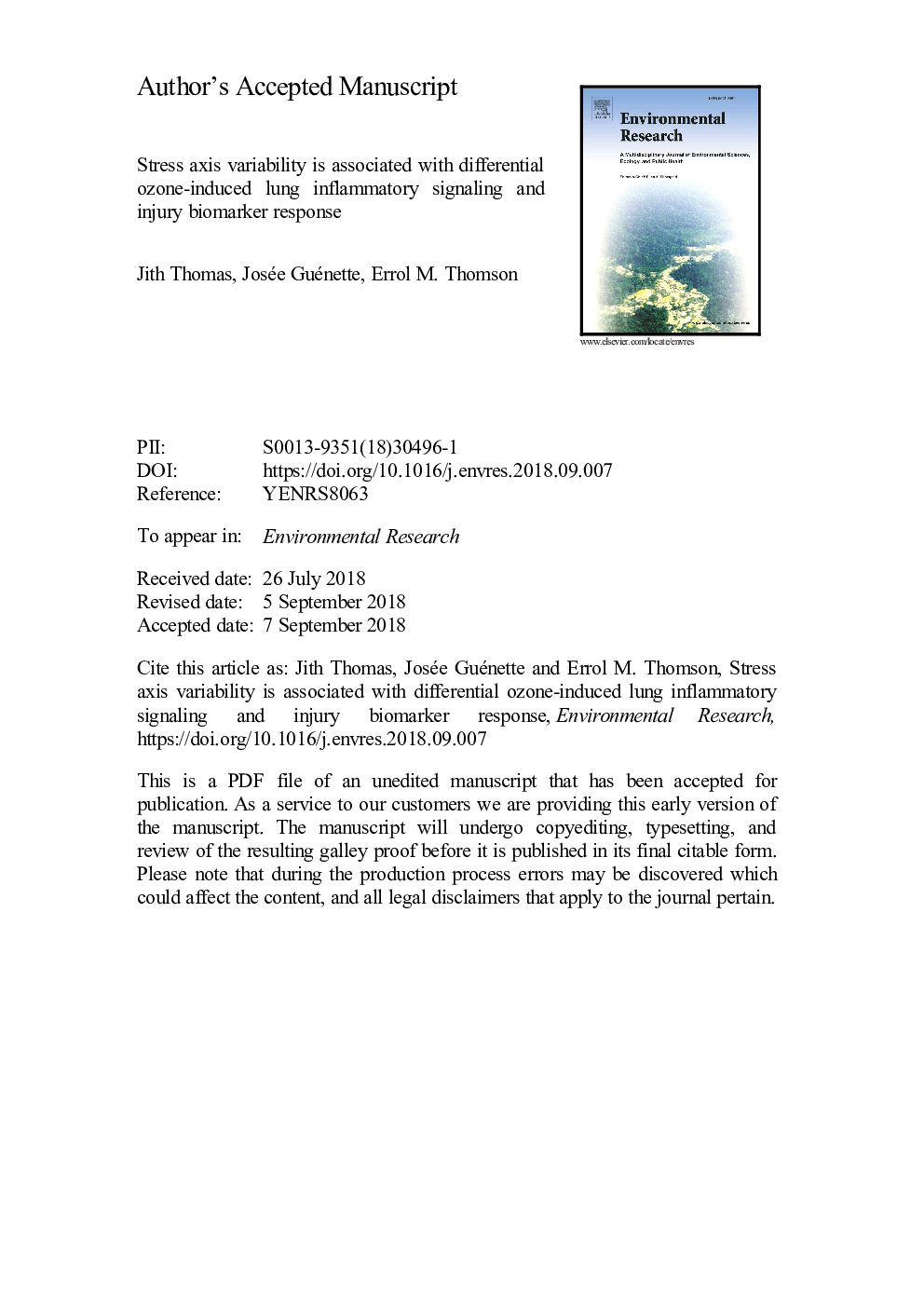| کد مقاله | کد نشریه | سال انتشار | مقاله انگلیسی | نسخه تمام متن |
|---|---|---|---|---|
| 11033337 | 1622536 | 2018 | 26 صفحه PDF | دانلود رایگان |
عنوان انگلیسی مقاله ISI
Stress axis variability is associated with differential ozone-induced lung inflammatory signaling and injury biomarker response
ترجمه فارسی عنوان
تغییرات محور تنش همراه با واکنش زنجیره ای التهابی ریه و واکنش زنگ خطر
دانلود مقاله + سفارش ترجمه
دانلود مقاله ISI انگلیسی
رایگان برای ایرانیان
کلمات کلیدی
آلودگی هوا، ازن، گلوکوکورتیکوئید، التهاب صدمه،
موضوعات مرتبط
علوم زیستی و بیوفناوری
علوم محیط زیست
بهداشت، سم شناسی و جهش زایی
چکیده انگلیسی
Ozone (O3), a ubiquitous urban air pollutant, causes adverse pulmonary and extrapulmonary effects. A large variability in acute O3-induced effects has been observed; however, the basis for interindividual differences in susceptibility is unclear. We previously demonstrated a role for the hypothalamic-pituitary-adrenal (HPA) stress axis and glucocorticoid response in acute O3 toxicity. Glucocorticoids have important anti-inflammatory actions, and have been shown to regulate lung inflammatory responses. We hypothesised that a hyporesponsive HPA axis would be associated with greater O3-dependent lung inflammatory signaling. Two genetically-related rat strains with known differences in stress axis reactivity, highly-stress responsive Fischer (F344) and less responsive Lewis (LEW), were exposed for 4â¯h by nose-only inhalation to clean air or 0.8â¯ppm O3, and euthanized immediately after exposure. As expected, baseline (air-exposed) plasma corticosterone was significantly lower in the hypo-stress responsive LEW. Although O3 exposure increased plasma corticosterone in both strains, corticosterone remained significantly lower in LEW when compared to F334. LEW exhibited greater O3-induced inflammatory cytokine/chemokine signaling compared to F344, consistent with the lower corticosterone levels. Since we observed strain-specific differences in inflammatory signaling, we further investigated injury biomarkers (total protein, albumin and lactate dehydrogenase). Although the hyper-responsive F344 exhibited lower inflammatory signaling in response to O3 compared with LEW, they had greater levels of lung injury biomarkers. Our results indicate that stress axis variability is associated with differential O3-induced lung toxicity. Given the large variability in stress axis reactivity among humans, stress axis regulation could potentially be a determining factor underlying O3 sensitivity.
ناشر
Database: Elsevier - ScienceDirect (ساینس دایرکت)
Journal: Environmental Research - Volume 167, November 2018, Pages 751-758
Journal: Environmental Research - Volume 167, November 2018, Pages 751-758
نویسندگان
Jith Thomas, Josée Guénette, Errol M. Thomson,
